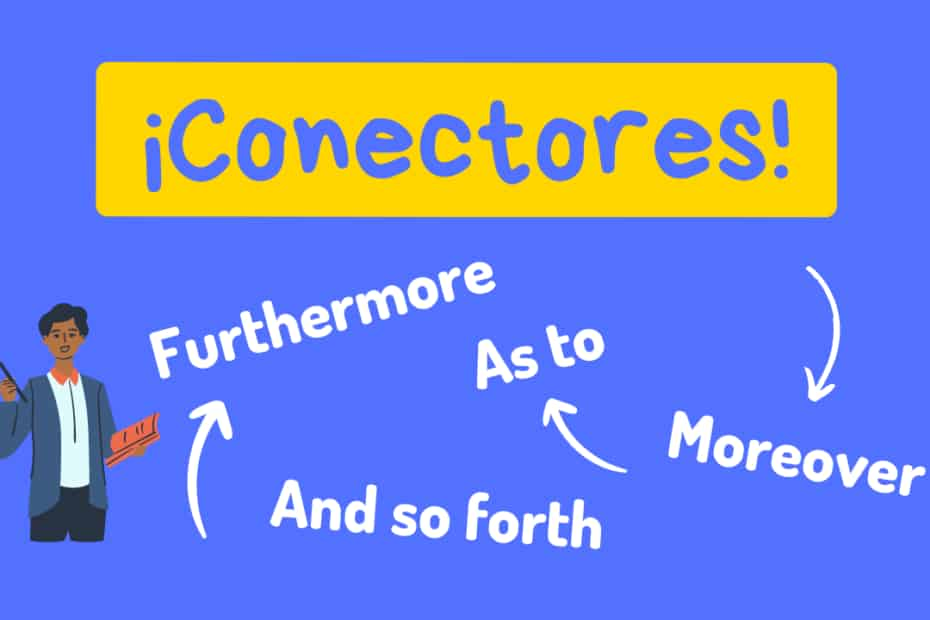
Los conectores en inglés, conocidos como “linking words” o “connectors”, son palabras o frases que permiten enlazar ideas dentro de un texto de manera coherente y estructurada. Estos conectores facilitan la comprensión y mejoran la fluidez de la redacción, ya que ayudan a relacionar oraciones, expresar contrastes, dar ejemplos, indicar causa y efecto, entre otras funciones. En este artículo, exploraremos los diferentes tipos de conectores y cómo utilizarlos correctamente en la escritura académica y cotidiana.
1. Conectores de adición
Estos conectores sirven para agregar información adicional a una idea previamente mencionada.
- And (y): “She loves reading and writing.”
- Moreover (además): “He is intelligent; moreover, he is very hardworking.”
- Furthermore (además): “The company offers good salaries; furthermore, it provides health insurance.”
- Besides (además): “I don't like horror movies; besides, they give me nightmares.”
- In addition (además): “She studies French; in addition, she practices Spanish.”
- Not only… but also (no solo… sino también): “She is not only a teacher but also a writer.”
2. Conectores de contraste
Estos conectores permiten establecer diferencias o contradicciones entre ideas.
- But (pero): “He wanted to go, but he was too tired.”
- However (sin embargo): “The hotel was beautiful; however, it was very expensive.”
- Nevertheless (no obstante): “She was tired; nevertheless, she continued working.”
- On the other hand (por otro lado): “The weather is cold; on the other hand, it's sunny.”
- Although / Even though (aunque): “Although it was raining, they went to the park.”
- Whereas (mientras que): “She loves coffee, whereas he prefers tea.”
3. Conectores de causa y efecto
Estos conectores expresan la relación de causa y consecuencia entre dos ideas.
- Because (porque): “She stayed home because she was sick.”
- Since (ya que): “Since it was late, they decided to leave.”
- Due to (debido a): “The flight was delayed due to bad weather.”
- Therefore (por lo tanto): “He didn't study; therefore, he failed the exam.”
- As a result (como resultado): “She trained hard; as a result, she won the race.”
- Thus (así, por lo tanto): “He was the best candidate; thus, he got the job.”
4. Conectores de comparación y semejanza
Estos conectores se utilizan para establecer similitudes entre ideas.
- Similarly (de manera similar): “He loves classical music; similarly, his brother enjoys opera.”
- Likewise (asimismo): “She is very punctual; likewise, her coworkers respect deadlines.”
- Just as (así como): “Just as she enjoys reading, he likes writing.”
- In the same way (de la misma manera): “The new policy will be applied in the same way as the previous one.”
5. Conectores de ejemplo y explicación
Estos conectores ayudan a introducir ejemplos o explicaciones adicionales.
- For example (por ejemplo): “There are many ways to learn a language; for example, watching movies in English.”
- For instance (por ejemplo): “She loves tropical fruits; for instance, mangoes and pineapples.”
- Such as (como, tales como): “I enjoy outdoor activities, such as hiking and cycling.”
- That is (es decir): “He is a polyglot, that is, he speaks multiple languages.”
- In other words (en otras palabras): “She is very meticulous; in other words, she pays attention to detail.”
6. Conectores de tiempo y secuencia
Estos conectores indican la sucesión o el orden de los eventos.
- First, second, third… (primero, segundo, tercero…): “First, we need to gather information.”
- Then (después, luego): “We went to the museum, then we had lunch.”
- After that (después de eso): “She finished her work; after that, she went for a walk.”
- Meanwhile (mientras tanto): “I was cooking; meanwhile, he was setting the table.”
- Before (antes de): “Before leaving, check if the lights are off.”
- After (después de): “After finishing the project, they took a break.”
7. Conectores de condición
Estos conectores expresan condiciones necesarias para que algo ocurra.
- If (si): “If it rains, we will stay home.”
- Unless (a menos que): “You can't go out unless you finish your homework.”
- Provided that (siempre que): “You can borrow my car provided that you drive carefully.”
- As long as (mientras que): “We will support you as long as you work hard.”
- In case (en caso de que): “Take an umbrella in case it rains.”
8. Conectores de conclusión y resumen
Estos conectores ayudan a cerrar ideas o resumir información.
- In conclusion (en conclusión): “In conclusion, hard work leads to success.”
- To sum up (para resumir): “To sum up, exercise improves both physical and mental health.”
- All in all (en general, en definitiva): “All in all, the trip was a great experience.”
- In summary (en resumen): “In summary, we must act now to protect the environment.”
El uso adecuado de los conectores en inglés es fundamental para mejorar la coherencia y cohesión de cualquier tipo de texto. Al emplearlos correctamente, se facilita la comprensión del mensaje y se logra una redacción más clara y estructurada. Ya sea en ensayos académicos, correos electrónicos, informes o conversaciones, dominar los conectores permitirá una comunicación más efectiva y profesional en inglés.
